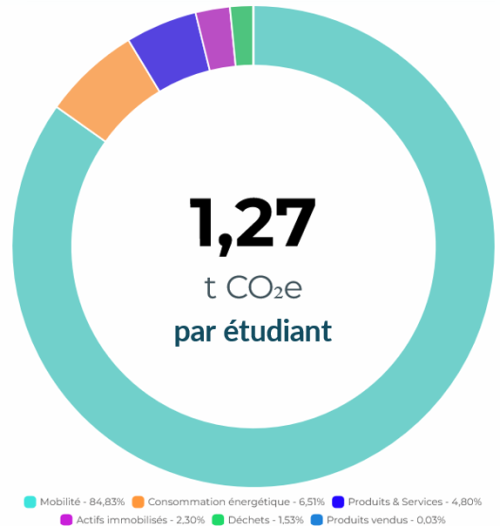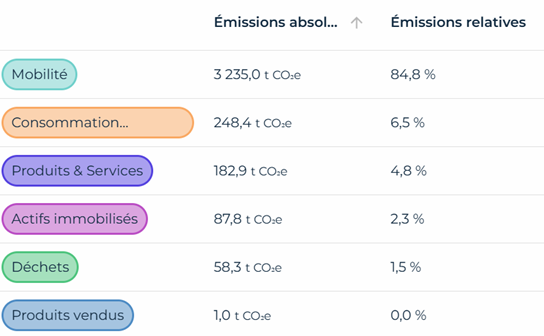
Total

Par étudiant

The three main sources of emissions were

By analyzing ICHEC’s carbon footprint, three major categories clearly stand out:
Mobility – 84.8% of emissions (3,235 tCO₂e)
Mobility is by far the main source of emissions, mainly due to students’ daily commuting.
Student car use alone accounts for nearly 50% of total emissions (1,895 tCO₂e).
Energy consumption – 6.5% (248 tCO₂e)
This is mainly linked to the use of natural gas for heating on campus. Electricity use also contributes.
Notable efforts have already been made in recent years to reduce ICHEC’s energy footprint through technical and consumption-related adjustments.
Purchases of goods and services – 4.8% (183 tCO₂e)
The most significant emissions in this category come from infrastructure services (technical maintenance, cleaning), representing nearly 3% of total emissions.
Other contributors include the purchase of consumables (paper, office supplies) and food (mainly products sold in the cafeteria).

What’s next?
This first carbon footprint assessment marks a key milestone for ICHEC. It provides a solid baseline to guide our future efforts to reduce emissions, focusing on the most impactful sources.
Among the first steps planned, raising student awareness about the environmental impact of their commuting habits will be a priority starting in the 2025–2026 academic year. This awareness campaign will aim to encourage more sustainable transport choices.
The results of the assessment will also feed into our broader sustainability strategy, prompting a review of existing actions and helping us refine our priorities for the coming years.
And after that?
A second carbon assessment is scheduled within the next two years. Its main goal will be to improve data quality, monitor changes in our footprint, assess the impact of our actions, and adjust our priorities accordingly.